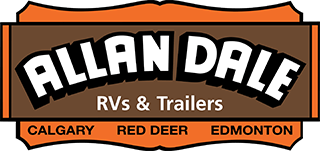Adding Antifreeze to Your RV’s Plumbing System
 Before you’re ready to put your RV away for the winter, you’ll need to prepare the plumbing system. Up here in Alberta, temperatures can easily dip below freezing and stay there for an extended period of time. If you leave water in the system, the constant freezing and thawing can wreak havoc on the pipes and leave you with a mess come spring.
Before you’re ready to put your RV away for the winter, you’ll need to prepare the plumbing system. Up here in Alberta, temperatures can easily dip below freezing and stay there for an extended period of time. If you leave water in the system, the constant freezing and thawing can wreak havoc on the pipes and leave you with a mess come spring.
That’s why it’s important to add antifreeze, even if you’ll be storing your RV in a temperature-controlled area. To help you out, Allan Dale Trailers & RVs has provided a guide to walk you through the process. You can also contact one of our experienced staff at our locations in Red Deer and Edmonton for some additional advice. We’re happy to help with all your RV-related needs.
Empty the Holding Tanks
Firstly, you’ll need to empty the plumbing system entirely. Start with the holding tanks. This will probably require you head to a dumpsite. Empty freshwater tank first, and then move onto the black and grey tanks. The latter two will also need to be cleaned out, however that may look for your particular RV (if you’re sick of doing this by hand, consider stopping by our RV dealership to check out the campers that come with their own flushing system). You can also use the cleaning process to flush out the septic hose.
Finally, empty the hot water tank. Remember, this can come with some risk, so never empty the tank when the water is hot or under pressure.
Empty the Pipes
Even the smallest amount of water can do so some damage as it freezes and melts, so you’ll need to empty out every last drop of water from the pipes themselves. Water can also dilute the antifreeze. This will mean opening all valves inside the trailer and opening the low-point drain plug(s) beneath the RV. To make this process faster, you can turn on your water pump. When you’re sure you’ve drained the plumbing system as best you can, replace the caps on the drains.
Water Heater Bypass
Now you’ll want to activate the water heater bypass. You won’t need to waste gallons of product filling up this tank, so don’t forget this step. Newer RVs often come with a bypass installed, but if yours doesn’t, you’ll want to get one. Then just flip the switch and you’re ready for the antifreeze.
Add the Antifreeze
When it’s time to add the antifreeze, you’ll want to use your water pump, fitted with a converter kit on the inlet side, to drop the inlet side into the antifreeze. Then attach the other end to your RV’s plumbing system. Turn on the pump and then turn on the nearest faucet, starting with the cold water valve. When pink liquid starts to come out, turn on the hot water valve. Turn off both valves and then move to the next nearest faucet, repeating the process. Do this with every faucet, getting further and further away from the pump.
Don’t forget this includes indoor and outdoor showers, as well as the toilets. Once you’re sure antifreeze has made its way through the entirety of your plumbing system, pour a cup of the product down every drain and every toilet.
Wrapping Up
Don’t forget to check out other parts of your RV that might use water and need winterization. For example, appliances that use water may have their own winterization process. For this, you’ll want to refer to your owner’s manual for guidance. You can also take it to a professional for additional help.
Once you’ve got your plumbing system completely winterized, you’ll just have to prepare the rest of the camper for storage and you’re ready to go. If you need additional help, or if you’d like to check out some of our RVs for sale, stop by Allan Dale Trailers & RVs in Red Deer and Edmonton, Alberta, and let our experienced staff know how we can help you.


